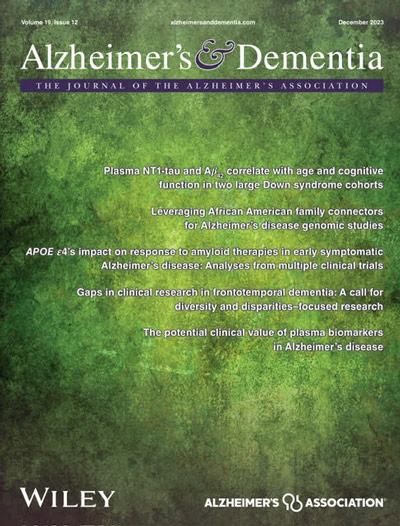Plasma p-tau217 and p-tau217/Aβ1-42 are effective biomarkers for identifying CSF- and PET imaging-diagnosed Alzheimer's disease: Insights for research and clinical practice
Abstract
INTRODUCTION
With the advancement of disease-modifying therapies for Alzheimer's disease (AD), validating plasma biomarkers against cerebrospinal fluid (CSF) and positron emission tomography (PET) standards is crucial in both research and real-world settings.
METHODS
We measured plasma phosphorylated tau (p-tau)217, p-tau181, amyloid beta (Aβ)1-40, Aβ1-42, and neurofilament light chain in research and real-world cohorts. Participants were categorized by brain amyloid status using US Food and Drug Administration/European Medicines Agency–approved CSF or PET methods.
RESULTS
Plasma p-tau217 and p-tau217/Aβ1-42 demonstrated superior accuracy in detecting brain amyloid pathologies, with area under the curve from 0.94 to 0.97 in all cohorts. Specificity was lower in the real-world cohort but improved significantly by integrating demographic and clinical factors, aligning performance with research cohorts. Additionally, plasma biomarkers exhibited strong correlations with their CSF counterparts and PET standardized uptake value ratios, with significant associations in amyloid-positive participants.
DISCUSSION
Plasma p-tau217 and p-tau217/Aβ1-42 are effective diagnostic tools. However, patient demographics, apolipoprotein E ε4 status, and cognitive condition must be considered to improve specificity in the clinical practice.
Highlights
- Plasma phosphorylated tau (p-tau)217 and p-tau217/amyloid beta (Aβ)1-42 demonstrated exceptional accuracy (area under the curve: 0.94–0.97) in detecting brain amyloid pathologies across both research (Southern China Aging Brain Initiative [SCABI]-1, SCABI-2) and real-world clinical practice (RCP) cohorts.
- Incorporating patient-specific factors (sex, age, apolipoprotein E ε4, cognitive status) improved diagnostic specificity in the clinical RCP cohort, aligning its performance with that of research cohorts.
- Plasma biomarkers, particularly p-tau217 and their ratios, showed robust correlations with cerebrospinal fluid biomarkers and positron emission tomography amyloid standardized uptake value ratios, underscoring their value as non-invasive diagnostic alternatives.
- Plasma p-tau217 and p-tau217/Aβ1-42 proved highly effective in diagnosing amyloid burden, offering a practical solution to bridge research advancements with real-world clinical practice.


 求助内容:
求助内容: 应助结果提醒方式:
应助结果提醒方式:


